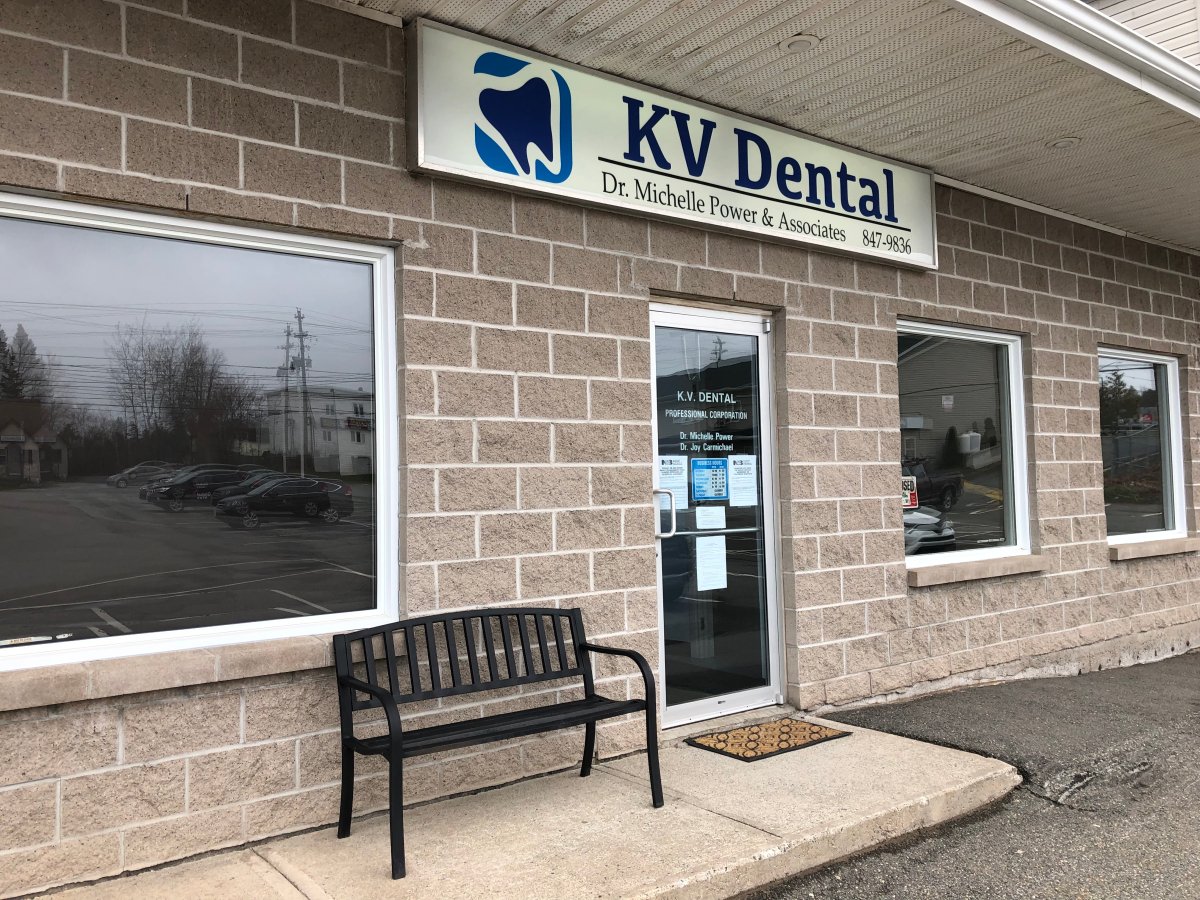Dr. Joy Carmichael examined the waiting room at her clinic, the “new normal” for her dentistry practice.

There are two chairs in the rectangular-shaped room – one in the middle of a long wall, the other on a shorter end wall – in a space that used to seat nine.
It’s one of countless changes patients will see when dental clinics like Carmichael’s KV Dental open for business for the first time in nearly two months, as early as Wednesday.
The New Brunswick Dental Society said it made the decision to close its members’ practices prior to the province declaring a state of emergency in mid-March, in the wake of the coronavirus outbreak.
Since then, only emergency procedures were done in person. Other, non-urgent care was handled strictly by telephone.
Carmichael, the president of the NBDS, said it was a challenge.
“We’ve termed it ‘tele-dentistry,’” Carmichael said. “And we’ve really had to rely on (pharmaceutical) therapy, and communication over the phone is quite different than an in-person exam.”
Non-emergency dental care was included in Phase 2 of New Brunswick’s COVID-19 recovery plan.
The society said that in the early stages of reopening, it wants dentists to prioritize patients based on their needs.
“We wanted to make sure that our members are compliant with the Department of Health – the chief medical officer’s plan – as well as WorkSafe New Brunswick plans and our own plans,” said NBDS executive director Paul Blanchard. “A lot of that emphasis is around social distancing or physical distancing. It’s important that our members understand what the requirements are.”

Get weekly health news
And there are many requirements.
In most cases, patients will be asked to remain in their vehicles when they arrive for appointments, notifying the reception desk by phone of their arrival. Exceptions will be made for patients who are elderly or need assistance.
Carmichael also emphasized the need for patients to arrive alone, if possible.
She said patients will be asked to wear community masks until their examinations begin, and use hand sanitizer provided when arriving and leaving the office.

“We will be reducing the patient flow, reducing patient contact between one another,” Carmichael said. “Maintaining that two-metre, six-foot distance between patients and staff.”
Magazines and pamphlets will be removed from waiting rooms, as will any children’s toys or games.
Carmichael said patients may also notice subtle changes to the appearance of the dentist treating them.
“We’re always in eyewear, eye protection, masks, gloves, scrubs, uniforms, sterilizing and infection protocols are very high, medical-grade. So at this point, we’re just enhancing those personal protective equipment for some particular procedures.”
She said some dentists will wear N95 protective masks, depending on the procedure.
Even though some clinics will open Wednesday, Carmichael believes others will wait until after the upcoming long weekend, giving them extra time to institute the new protocols.
Dentists will also be required to book more time for appointments, Blanchard said.
“We want people scheduled more sporadically than usual,” he said. “We don’t want to have a dentist going from one room to another room, the way they might usually have done. You’re only going to see one patient at a time.”
Carmichael said it will likely be another month before hygienists are back in the office regularly, although she did expect some to start right away.
Meantime, the province of Nova Scotia is signalling it is closer to having dentists reopen there.
Chief medical officer of health, Dr. Robert Strang, speaking at his province’s daily COVID-19 briefing, said consultations are underway with dentists and other regulated medical professionals to map out plans for them to start seeing patients again.
“One of our priorities is dental care, and I have a meeting coming up Friday to meet with the dental community about how they can slowly start to expand their services in a safe manner.”










Comments